Comments / Questions (8)
![]() Ruth CDowell wrote:
Ruth CDowell wrote:
Starting right front piece. It says increase 1 stitch for neck at the end of every 4th row. Then increase 1 st 2 times then every other row. Does this mean every 4th row twice and then every other row 18 times
27.08.2024 - 17:41DROPS Design answered:
Dear Mrs CDowell, you increase for neck first 2 times on every 4th row (on every other row from RS) then 18 times on every other row (on every row from RS). Happy knitting!
28.08.2024 - 08:51
![]() Ruth McDowell wrote:
Ruth McDowell wrote:
I’ve reached the point in the back where I increase for the sleeves but I can’t understand that if I add stitches (12) at the end of 2 rows and then 12 at the end of next row I should only have140 stitches and not the 176 it says in the pattern. Please explain
18.03.2024 - 15:54DROPS Design answered:
Dear Ruth, supposing from the 12 stitches that we are talking about size XL, the pattern says that you should "at the end of every row as follows: Cast on 14-14-13-12-11-9 sts 2 times and 15-14-14-12-13-11 sts 1 time = 168-171-173-176-181-182 sts. ", so you actually cast on that 12 stitches 6 times in total (3 times each side), which is 72 stitches increased in total, adding that to the 104 you already had, the result is 176. I hope that helps. Happy Knitting!
18.03.2024 - 20:37
![]() Carolyn Schwartz wrote:
Carolyn Schwartz wrote:
Can you tell me what measurement units the schematic measures are using? cm or inches? I am trying to figure out what size to make. Thank you.
14.08.2023 - 16:44DROPS Design answered:
Hi Carolyn Schwartz! It uses centimetres. Happy knitting!
14.08.2023 - 23:04
![]() Marion Schuhmann-Ränsch wrote:
Marion Schuhmann-Ränsch wrote:
Ist es möglich, daß Model nur mit Alpaka-Wolle zu stricken? Warum haben Sie noch Kid Silk mit dazu genommen.? Ich würde gern einfädig stricken
25.02.2018 - 10:13DROPS Design answered:
Liebe Frau Schuhmann-Ränsch, Kid-Silk bringt etwas Mohair & Seide zum Modell, aber gerne können Sie 2 Fäden Alpaca anstatt benutzen, mehr über Garnalternativen lesen Sie hier. Viel Spaß beim stricken!
26.02.2018 - 09:20
![]() Laura wrote:
Laura wrote:
Per realizzare questo modello con il cotone Paris quanto filato occorre?
05.03.2016 - 14:24DROPS Design answered:
Buongiorno Laura, questo modello è realizzato con due filati del gruppo A o 1 del gruppo C. Ad esempio per la taglia S servono 300 g totali di Alpaca (167 m x 6 gom = 1002 m) e 100 g di Kid-Silk (200 m x 4 gom = 800 m), per cui facendo riferimento ad Alpaca servono circa 14 gomitoli di Paris (1000/75 = 13.3 gomitoli) Può leggere anche questa lezione sulla sostituzione dei filati. Buon lavoro!
06.03.2016 - 09:51
![]() Ellen wrote:
Ellen wrote:
Bitte berichtigen Sie die Anleitung: Statt "Rückenteil" als Anleitungsüberschrift steht dort "Vorderteil" ...
06.02.2016 - 10:04DROPS Design answered:
Ja, Sie haben Recht, das wird gleich korrigiert, danke für den Hinweis!
06.02.2016 - 13:22
![]() Anidy29 wrote:
Anidy29 wrote:
J'adore !!!
16.01.2016 - 09:27
![]() Katharina wrote:
Katharina wrote:
Diese Jacke hat das Zeug zum "Allrounder" - und kann in vielen Farben und Wollarten ganz unterschiedlich wirken. Ein großartiges Modell - ich freue mich darauf!
12.12.2015 - 11:41
Irish Sea Cardigan#irishseacardigan |
|
|
|
|
Knitted DROPS jacket in garter st with stripes in 1 strand “Alpaca” and 1 strand “Kid-Silk”. Size: S - XXXL.
DROPS 168-16 |
|
|
GARTER ST (back and forth on needle): K all rows. 1 ridge = 2 rows K. STRIPES: Work stripes in 1 strand “Alpaca” and 1 strand ”Kid-Silk” as follows: BACK PIECE: Work in garter st with light grey green until piece measures 28-29-30-31-32-33 cm. Then work * 1 ridge off white and 1 ridge light grey green *, repeat from *-* for 16-16-17-17-18-18 cm (make sure to avoid a tight yarn at colour change). Work in garter st with off white until piece measures 63-65-67-69-71-73 cm (= mid on top of shoulder). FRONT PIECE: Continue in garter st with off white until piece measures 19-20-20-21-21-22 cm. Then work * 1 ridge light grey green and 1 ridge off white *, repeat from *-* for 16-16-17-17-18-18 cm (make sure to avoid a tight yarn at colour change). Work in garter st with off white until piece measures 63-65-67-69-71-73 cm. DECREASE TIP: Dec inside 1 edge st. All dec are done from RS! Dec as follows before 1 edge st: K 2 tog. Dec as follows after 1 edge sts: Slip 1 st as if to K, K 1, psso. INCREASE TIP: Inc inside 1 edge st. Inc 1 st by making a YO. On next row K YO twisted to avoid hole. BUTTONHOLES: Dec for buttonholes on right front piece. 1 buttonhole = K tog third and fourth st from edge and make 1 YO. Measure from neck edge and dec for buttonholes when piece measures: SIZE S: 2, 9, 16 and 23 cm. SIZE M: 2, 9, 16 and 23 cm. SIZE L: 2, 10, 18 and 26 cm. SIZE XL: 2, 10, 18 and 26 cm. SIZE XXL: 2, 11, 20 and 29 cm SIZE XXXL: 2, 11, 20 and 29 cm ---------------------------------------------------------- JACKET: Worked back and forth in one over shoulders and down on the other side. Work entire jacket in 1 strand “Alpaca” and 1 strand ”Kid-Silk”. BACK PIECE: Cast on 70-77-83-94-101-114 sts (incl 1 edge st in each side) on circular needle size 5.5 mm with 1 strand light grey green Kid-Silk and 1 strand light grey green Alpaca. Work in GARTER ST and STRIPES - see explanation above. When piece measures 10 cm, dec 1 st in each side of piece - READ DECREASE TIP! REMEMBER THE KNITTING TENSION Repeat dec every 6-5-5-5-5-5 cm 3-4-4-4-4-4 more times = 62-67-73-84-91-104 sts. When piece measures 34-34-35-35-36-36 cm, inc 1 st in each side of piece - READ INCREASE TIP! Repeat inc when piece measures 39-39-41-41-43-43 cm = 66-71-77-88-95-108 sts. Continue in garter st and with stripes. When piece measures 43-44-45-46-47-48 cm in total, inc 1 st in each side of piece = 68-73-79-90-97-110 sts. Repeat inc on every row from RS 7 more times = 82-87-93-104-111-124 sts. Then cast on new sts in each side for sleeves at the end of every row as follows: Cast on 14-14-13-12-11-9 sts 2 times and 15-14-14-12-13-11 sts 1 time = 168-171-173-176-181-182 sts. When piece measures 61-63-65-67-69-71 cm, cast off for neck as follows: Adjust so that next row is from WS, work the first 71-72-73-74-76-76 sts (= left shoulder/sleeve) and slip these on a stitch holder, cast off the next 26-27-27-28-29-30 sts for neck and work the rest of row (= 71-72-73-74-76-76 sts on right shoulder/sleeve). RIGHT FRONT PIECE: Continue to dec 1 st at the end of next row from RS = 70-71-72-73-75-75 sts. When piece measures 63-65-67-69-71-73 cm, insert a marker in piece (= mid on top of shoulder). NOW MEASURE PIECE FROM HERE! Continue with garter st and stripes as before. When piece measures 6 cm from marker mid on top of shoulder (adjust so that next row is from RS) inc 1 st for neck at the end of every 4th row (i.e. inc inside 1 edge st at the end of row from RS) as follows: Inc 1 st 2 times and then every other row: 1 st 17-18-18-18-19-19 times. After last neck inc dec for BUTTONHOLES - see explanation above: AT THE SAME TIME when piece measures 14-15-16-17-18-19 cm, cast off sts for sleeve at the beg of every row from RS as follows: Cast off 15-14-14-12-13-11 sts 1 times and 14-14-13-12-11-9 sts 2 times = 46-49-52-57-61-67 sts. On beg of next row from RS dec 1 st in the side, repeat the same dec on every row from RS 7 more times = 38-41-44-49-53-59 sts. Make sure to work stripes on the same place on front piece as on back piece. Then dec 1 st in the side (i.e. at the beg of row from RS) when piece measures 24-26-26-28-28-30 cm and 29-31-32-34-35-37 cm = 36-39-42-47-51-57 sts. When piece measures 35-35-37-39-41-43 cm, inc 1 st in the side, repeat inc every 6-5-5-5-5-5 cm 3-4-4-4-4-4 more times = 40-44-47-52-56-62 sts on needle. When piece measures 63-65-67-69-71-73 cm from marker mid on top of shoulder, loosely cast off. LEFT FRONT PIECE: Slip sts from stitch holder back on needle = 71-72-73-74-76-76 sts. Continue to dec 1 st at the beg of next row from RS (from neck) = 70-71-72-73-75-75 sts. When piece measures 63-65-67-69-71-73 cm, insert a marker in piece (= mid on top of shoulder). NOW MEASURE PIECE FROM HERE! Continue with garter st and stripes as before. When piece measures 6 cm from marker mid on top of shoulder (adjust so that next row is from RS) inc 1 st for neck at the beg of every 4th row (i.e. inc inside 1 edge st at the beg of row from RS) as follows: Inc 1 st 2 times and then every other row: 1 st 17-18-18-18-19-19 times AT THE SAME TIME when piece measures 14-15-16-17-18-19 cm, cast off sts for sleeve at the beg of every row from WS as follows: Cast off 15-14-14-12-13-11 sts 1 times and 14-14-13-12-11-9 sts 2 times = 46-49-52-57-61-67 sts. On next row from RS dec 1 st at end of row in the side, repeat the same dec on every row from RS 7 more times = 38-41-44-49-53-59 sts. Make sure to work stripes on the same place on front piece as on back piece. Then dec 1 st in the side when piece measures 24-26-26-28-28-30 cm and 29-31-32-34-35-37 cm = 36-39-42-47-51-57 sts. When piece measures 35-35-37-39-41-43 cm, inc 1 st in the side. Repeat inc every 6-5-5-5-5-5 cm 3-4-4-4-4-4 more times = 40-44-47-52-56-62 sts. When piece measures 63-65-67-69-71-73 cm from marker mid on top of shoulder, loosely cast off. ASSEMBLY: Sew underarm seams and side seams in one in outer loops of edge sts. Sew the buttons on to left front piece. |
|
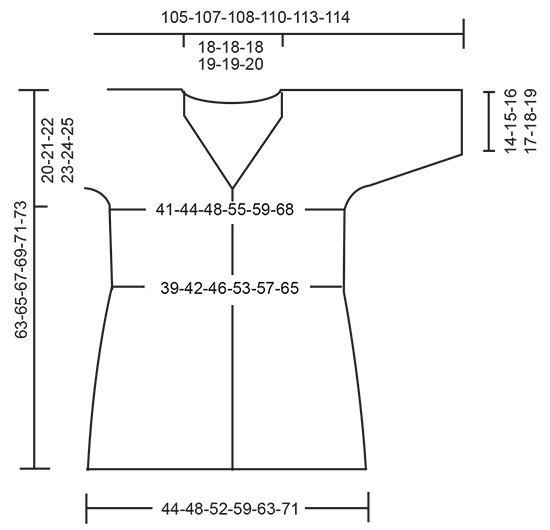 |
|
Have you finished this pattern?Tag your pictures with #dropspattern #irishseacardigan or submit them to the #dropsfan gallery. Do you need help with this pattern?You'll find 18 tutorial videos, a Comments/Questions area and more by visiting the pattern on garnstudio.com. © 1982-2025 DROPS Design A/S. We reserve all rights. This document, including all its sub-sections, has copyrights. Read more about what you can do with our patterns at the bottom of each pattern on our site. |











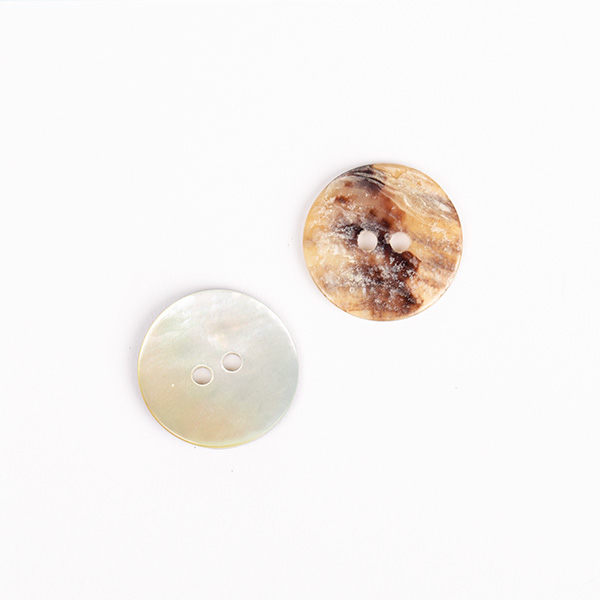


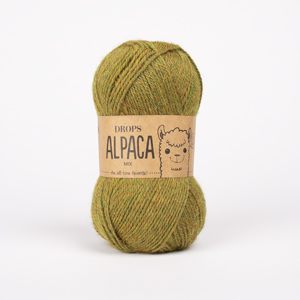
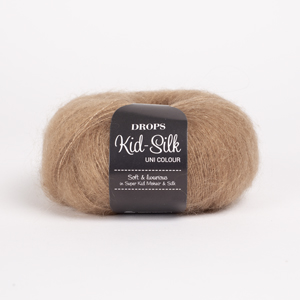

























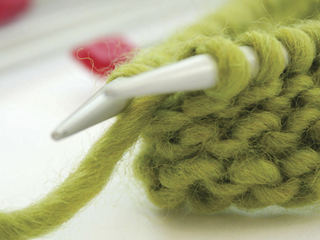



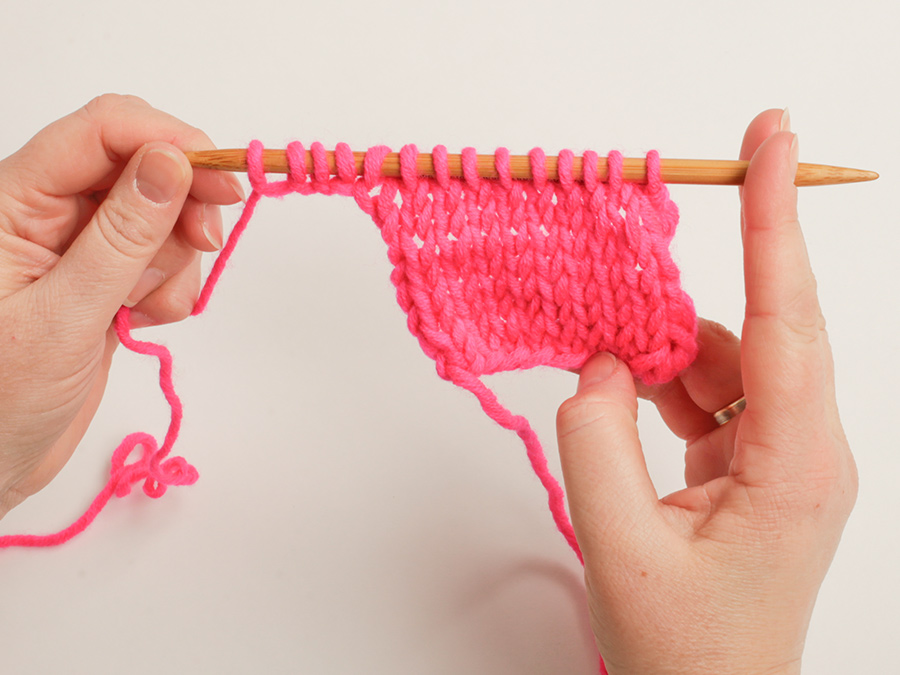


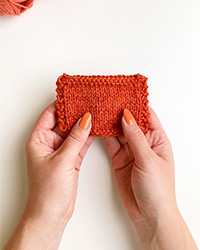
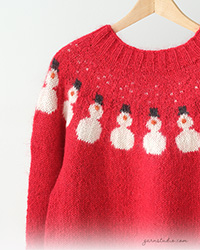
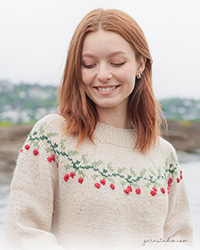
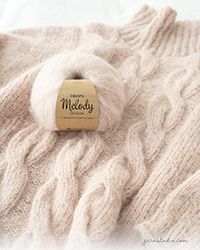
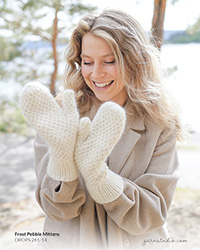
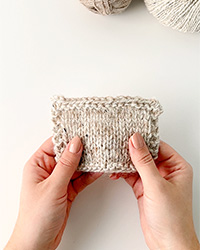
Post a comment to pattern DROPS 168-16
We would love to hear what you have to say about this pattern!
If you want to leave a question, please make sure you select the correct category in the form below, to speed up the answering process. Required fields are marked *.